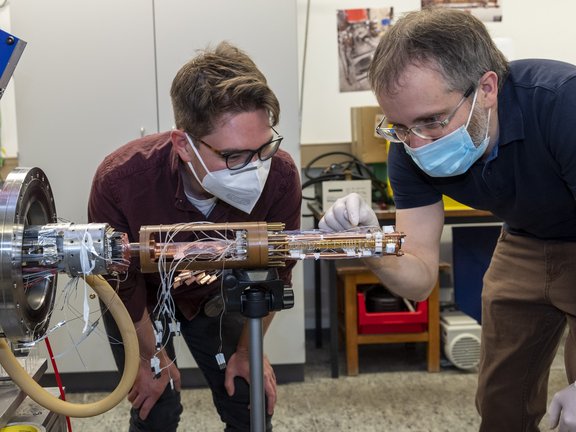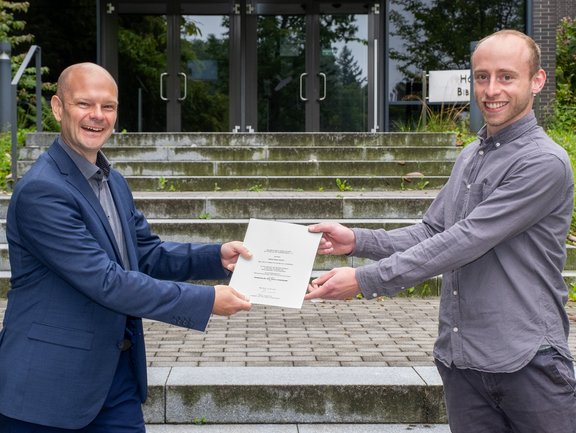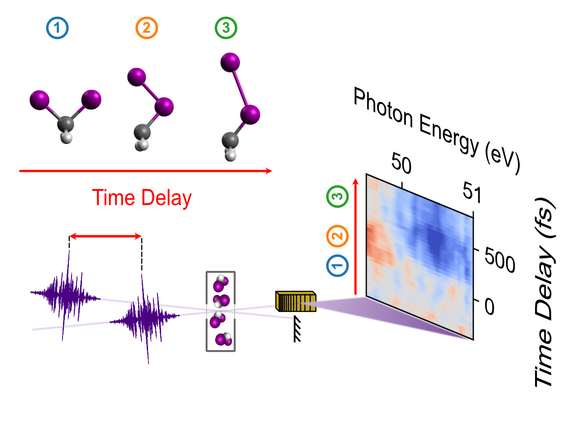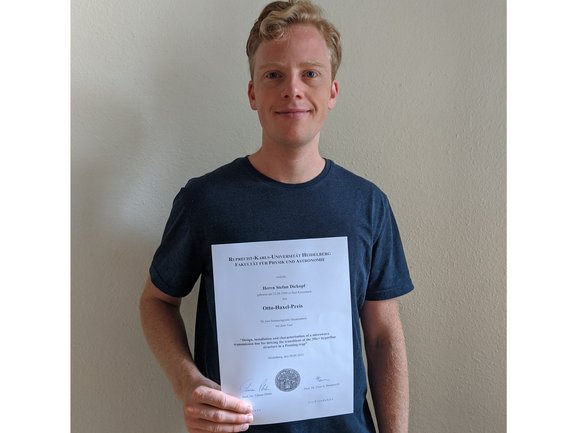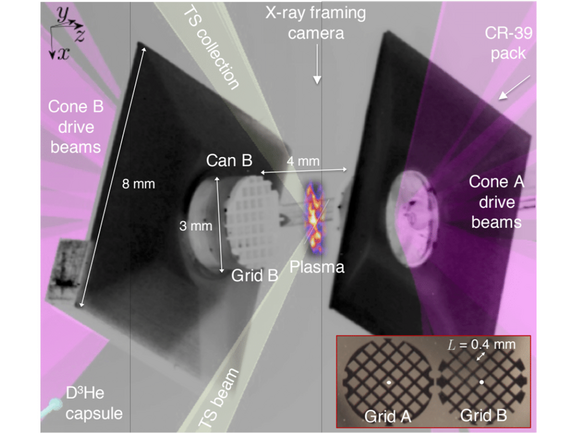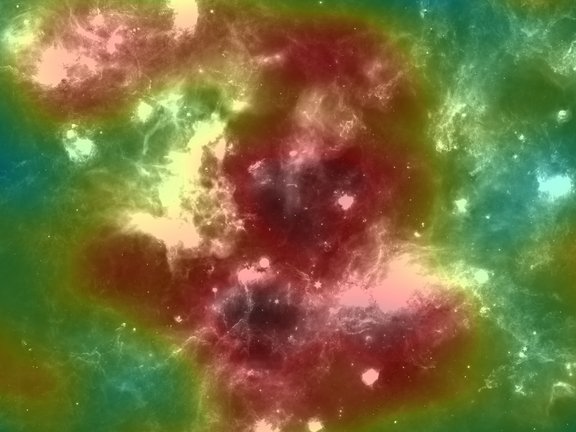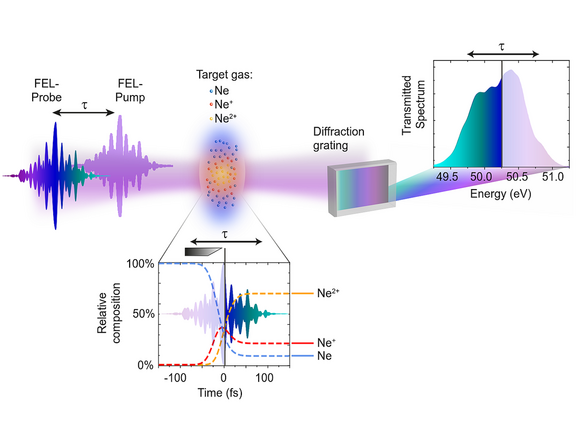All News
In the trap: new cooling method for charged particles
For the first time, physicists have successfully implemented a new method for cooling protons using laser-cooled ions – here beryllium ions. The…
Novel superconducting trap for precise frequency measurements
The group led by José Crespo López-Urrutia at MPIK in collaboration with the Physikalisch-Technische Bundesanstalt has built and successfully tested a…
Important measuring method of neutrino physics on the test bench
With precise mass measurements and highly accurate calculations, a team led by MPI for Nuclear Physics has now succeeded in independently testing the…
Cooling of single ions via tank circuit coupling
Members of the group around Sven Sturm in the division of Klaus Blaum at MPIK present a novel technique that allows to efficiently cool arbitrary ions…
Timing molecular structural dynamics both excited and probed by extreme ultraviolet light
MPIK physicists of the group around Christian Ott (division of Thomas Pfeifer) demonstrated for the first time an all-XUV (extreme ultraviolet)…
Otto-Haxel-Preis for Stefan Dickopf
For his outstanding achievements and the best experimental work in his master's degree, Stefan Dickopf receives this year's Otto Haxel Prize from the…
Extreme purity for the hunt for dark matter
XENON1T, the world's most sensitive detector for the direct detection of dark matter, has enormous purity requirements, and even the tiniest amount of…
Very-high-energy afterglow of a gamma-ray burst challenges emission scenarios
Researchers from the H.E.S.S. Collaboration succeeded to derive the intrinsic spectrum of the very-high-energy gamma-ray afterglow emission of a…
Gammapy choosen as official Science Tools for CTA
The analysis of observational data in gamma-ray astronomy requires specialised analysis methods and software to reach the highest possible sensitivity…
Exploring the Strong Interaction in the Universe
Achim Schwenk, Professor of Nuclear Physics at TU Darmstadt and Max Planck Fellow at the Max Planck Institute for Nuclear Physics in Heidelberg, has…
Determining the structure of a molecule with laser-induced electron diffraction
Researchers show how laboratory-frame photoelectron spectra can be used directly to determine the molecular structure with atomic precision from…
Experiments watch turbulent dynamo amplifying magnetic fields
An international collaboration, co-led by the University of Oxford and University of Rochester together with the Astrophysical Plasma Theory group at…
Could Star Clusters be “PeVatrons”?
HAWC has detected cosmic gamma rays with energies up to at least 200 Teraelectron volt (TeV, 1012 eV) from the direction of the “Cygnus Cocoon”. This…
X-ray double flashes control atomic nuclei
A team of researchers from the Max Planck Institute for Nuclear Physics in Heidelberg has coherently controlled nuclear excitations using suitably…
Funding for Florian Goertz's group extended
Due to the excellent result of an external review and a positive statement of the institute, the Max Planck Society has extended the funding of the…
Measuring chirps at extremely high frequencies
A new method provides an ultrafast plasma switch, which temporally cuts off parts of high-frequency light flashes. Carried trillions of times faster…
BASE opens up new possibilities in the search for cold dark matter
The Baryon Antibaryon Symmetry Experiment (BASE) at CERN’s Antimatter Factory has set new limits on the mass of axion-like particles – hypothetical…
Limits of atomic nuclei predicted
Novel calculations have enabled the study of nearly 700 isotopes between helium and iron, showing which nuclei can exist and which cannot. In an…
